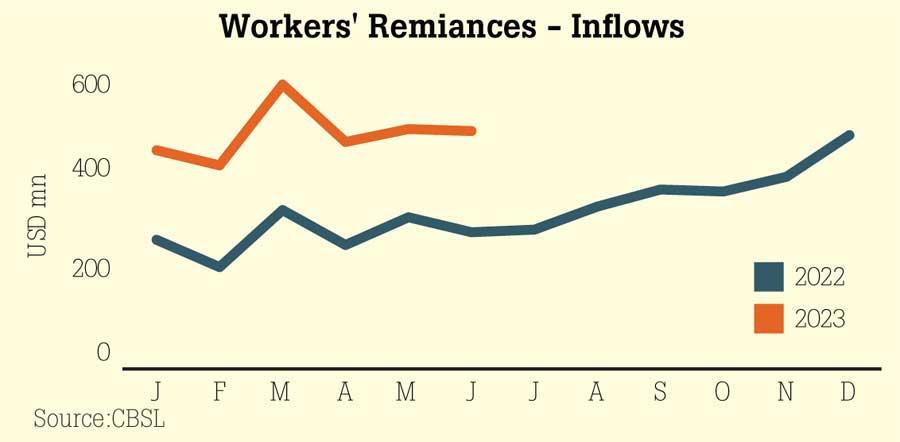10 Jul 2023 - {{hitsCtrl.values.hits}}

Sri Lanka is experiencing sustained strength in remittances from migrant workers, as June saw robust inflows that helped bolster the country’s fragile external sector.
In June, Sri Lanka received US$ 475.7 million from migrant workers, slightly lower than the US$ 479.7 million received in April but significantly higher than the US$ 274.3 million received a year ago when the country faced severe foreign exchange shortages.
The situation stabilised due to various measures taken by the Central Bank, including the decision to float the rupee in March last year, cracking down on informal channels, the lag effect of the mass exodus of people, and the restoration of political stability.
The currency float and the subsequent sharp depreciation of the rupee by approximately 80 percent immediately benefited Sri Lankan migrants, enticing them to opt for official banking channels instead of unofficial money exchangers that offered significantly higher premiums compared to the fixed exchange rate of Rs. 200 to a dollar.
With the strong inflows in June, Sri Lanka has received a total of US$ 2,822.6 million in remittance income during the first six months of the year, representing 75.3 percent increase compared to the same period in 2022.
The resumption of normal remittance inflows and the return of tourism inflows have provided much-needed strength and stability to the Sri Lankan economy and its external sector after three years of devastation caused by the Easter attacks in 2019 and subsequent virus-related restrictions.
Together, these factors have helped substantially reduce the trade deficit, which has been a chronic weakness in the Sri Lankan economy.
In light of the current situation, Central Bank Governor, Dr. Nandalal Weerasinghe, recently recommended further relaxation of import controls, stating that Sri Lanka can afford to increase its monthly import capacity to around US$ 1.6 to 1.7 billion from the current US$ 1.4 billion.
Traditionally, Sri Lanka has relied on current account inflows, primarily from remittances and tourism, to fund its persistent trade gap. When one source weakened and the other nearly halted, Sri Lanka faced challenges in adequately financing its imports in the second half of 2021, which snowballed into a fully-fledged socio-economic and political crisis.
31 Oct 2024 30 minute ago
31 Oct 2024 3 hours ago
31 Oct 2024 3 hours ago
31 Oct 2024 5 hours ago
31 Oct 2024 5 hours ago